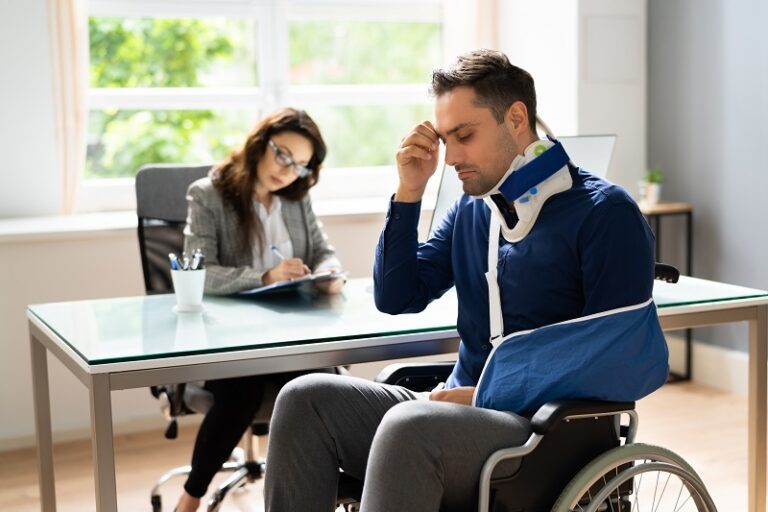[profileleft] [/profileleft]Sports concussions are a much larger problem than many of us thought 20 years ago. Concussions affect young people as much as they do adults if not more so on a long-term basis. Parents are becoming increasingly concerned about the dangers their children face when they play certain collision sports such as football or ice hockey. The fact is that there are problems with other sports as well.
[/profileleft]Sports concussions are a much larger problem than many of us thought 20 years ago. Concussions affect young people as much as they do adults if not more so on a long-term basis. Parents are becoming increasingly concerned about the dangers their children face when they play certain collision sports such as football or ice hockey. The fact is that there are problems with other sports as well.
People are working tirelessly to continue to raise awareness with regards to traumatic brain injuries in children. This includes the traumatic brain injury lawyers at Gomez Trial Attorneys. We’d like to highlight the work of a group known as Head Case. Head case is an organization of concerned parents hoping to make sports safer for children. The group publishes several different data points, including the rate of sports concussions for different activities. Below is an overview of some data.
Rate of Sports Concussions Broken Down
As stated above, most people think of certain sports when the topic of sports concussions comes up in conversation. Head Case published the rate of sports concussions for several activities. Per 100,000 athletic exposures, the concussion rates are as follows:
- Football: 64 – 76.8
- Boys’ ice hockey: 54
- Girl’s soccer: 33
- Boys’ lacrosse: 40 – 46.6
- Girls’ lacrosse: 31 – 35
- Boys’ soccer: 19 – 19.2
- Boys’ wrestling: 22 – 23.9
- Girls’ basketball: 18.6 – 21
- Girls’ softball: 16 – 16.3
- Boys’ basketball: 16 – 21.2
- Girls’ field hockey: 22 – 24.9
- Cheerleading: 11.5 to 14
- Girls’ volleyball: 6 – 8.6
- Boys’ baseball: Between 4.6 – 5
- Girls’ gymnastics: 7
In addition to the rate of sports concussions for different sports, the following statistics dig deeper into the problem:
- One-third of all sports concussions occur during practice.
- Nearly half of all reported sports concussions involve high school football players.
- 20 percent high school athletes will sustain a sports concussion during their sport’s season.
- One-third of high school athletes sustain two or more sports concussions in the same year.
Those interested in reviewing a full breakdown of the statistics can find them here.
Long-Term Impact and Cumulative Effect of Head Trauma
If an individual sustains a second concussion before the symptoms from a previous concussion have fully resolved, the individual is at an increased risk for severe disability and even death. Anders et al., The Essential Brain Injury Guide (5th ed. 2016) p. 489. This is due to a phenomenon called Second Impact Syndrome (SIS).
It has been well documented that a history of concussions can have a negative cumulative impact as well. Anders et al., The Essential Brain Injury Guide (5th ed. 2016) p. 80. Specifically, repetitive concussions can cause future concussions to take longer to heal and cause more lasting effects. Id.
Likewise, it is now generally accepted that repetitive head trauma can cause a rare, progressive degenerative condition called chronic traumatic encephalopathy. Id at 82. This process can begin in childhood, with the cumulative effect causing serious degenerative health conditions, decline in memory capabilities, decreased executive function, mood and behavior disturbance and wide range of other mental health issues.
Source: https://www.cdc.gov/concussion/headsup/clinicians/resource_center/complications_of_concussion.html
Sports Concussions Data – What It All Means
Clearly, this is troubling information for anyone who has a child playing sports or who has a child who may become interested in competing in sports or other physical activities. The traumatic brain injury lawyers at Gomez Trial Attorneys have already shared information regarding the potential damage that can be done to a young person who suffers a concussion. We are still learning more about what it really means for a child whose brain is injured on the football field, on the soccer pitch or on the softball diamond. For now, all we can do is hope that medical science continues to make progress on its research.
In the meantime, parents need to think about taking some steps to minimize the risk that their children will suffer one or more sports concussions. Examples of these steps include:
- Baseline – It’s becoming much easier to obtain a baseline measurement of a person’s brain. Parents should consider doing that for their child before they begin to compete. This will provide them with an opportunity to have an additional brain scan done if he or she suffers head trauma so that a comparative analysis can be done. This analysis will help families make better decisions regarding how to handle the process of recovering from an injury.
- Err on the side of caution – If your child suffers a concussion or any type of head injury while competing in a sport, you need to make sure that you are completely sure that he or she has fully recovered from that injury before allowing your child to return to competition. Gone are the days of, “rub some dirt on it and get back out there,” and “you just got your bell rung,” as we know too much now about how vulnerable the brain is to long-term harm.
- Communicate with coaches – Before your child begins a season and especially with a new team or coach, you should speak to that coach about his or her philosophy regarding head injuries. You need to be convinced that the coach approaches this risk the same way that you do in that your child will be immediately removed from competition at the first sign of trouble. The coach should also express an attitude of extreme caution with regards to allowing your child to return to competition.
- Communicate with your child – Perhaps most important is that you need to clearly communicate with your child. Your child needs to understand that there is no shame or embarrassment in leaving a game or a practice because of a head injury. Your child needs to know that it’s expected that he or she remains out of competition until it is completely safe to do so.
Sports Concussions – Options for Action
Finally, if you are not satisfied with the concussion protocol that exists with your child’s team, group or league, you should take steps to organize other parents and concerned parties to act as a collective force. Concerned parents acting as groups have affected tangible change around the country with regards to this problem. Some efforts have even led to the enactment of laws that govern sports concussions.
If your child has suffered head trauma and you believe that it was the result of negligence on the part of someone who should have been more protective, you should also seek legal advice. The traumatic brain injury attorneys at Gomez Trial Attorneys have been helping families whose loved ones have faced difficult challenges because of this type of conduct for several years.
Contact the firm as soon as possible to schedule a free initial consultation.







